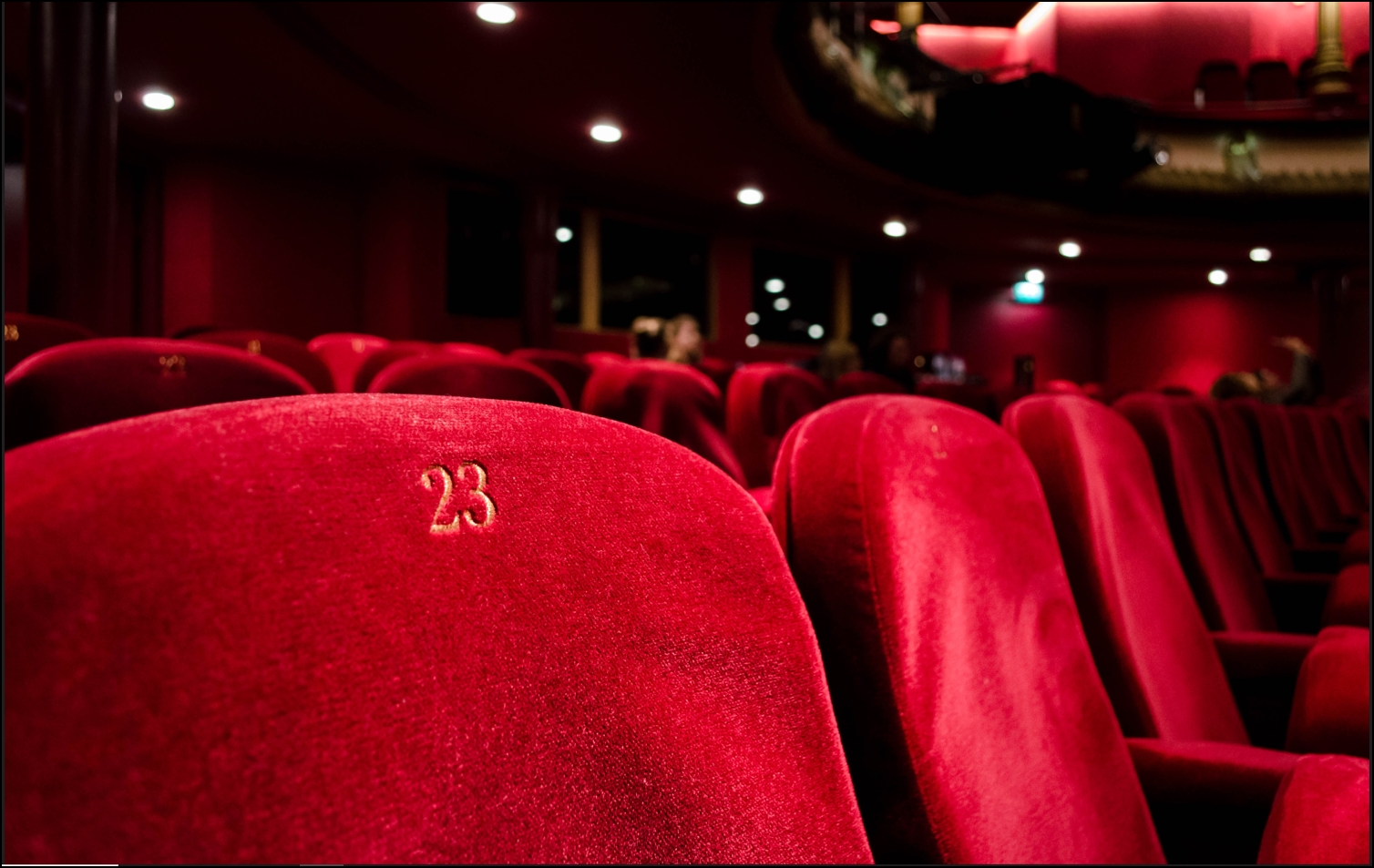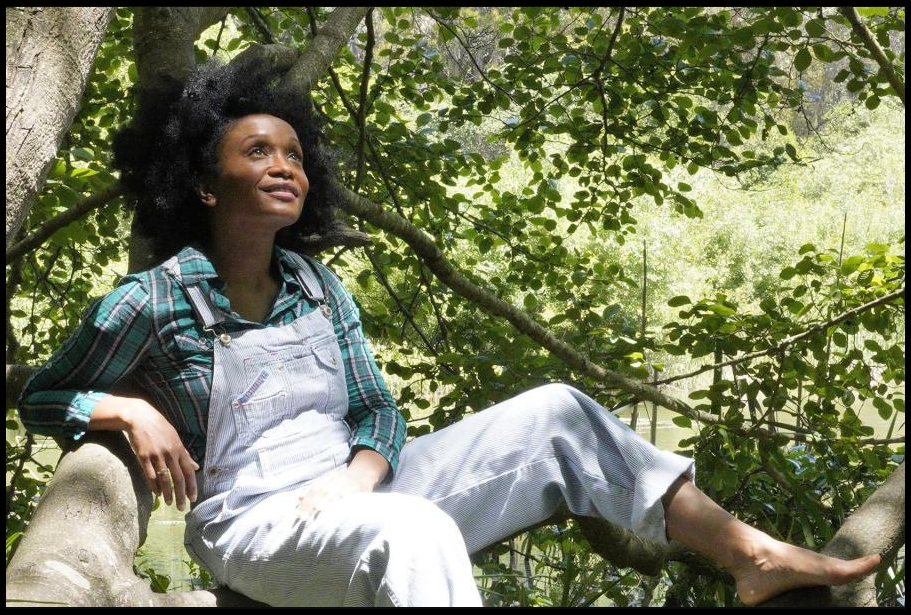by Jeff Dunn
There are many reasons to attend opera: resplendent spectacle, vocal pyrotechnics, unforgettable tunes, lavish costumes, and many other aspects of compelling theater. In the case of West Edge Opera’s Bulrusher, the reason is its depth and sensitivity of character development.
The lead character in Bulrusher (soprano Shawnette Sulker) is a former foundling, a young black woman who imports oranges for resale to the small Mendocino town of Boonville in 1955. She comes of age as she experiences her first love, develops racial consciousness, and encounters the truth of her parentage. But it is not just her journey that is impressively developed by the team of composer-librettist Nathaniel Stookey and playwright-librettist Eisa Davis. All of the major characters’ strengths and shortcomings become palpable as viewers become immersed in the story.
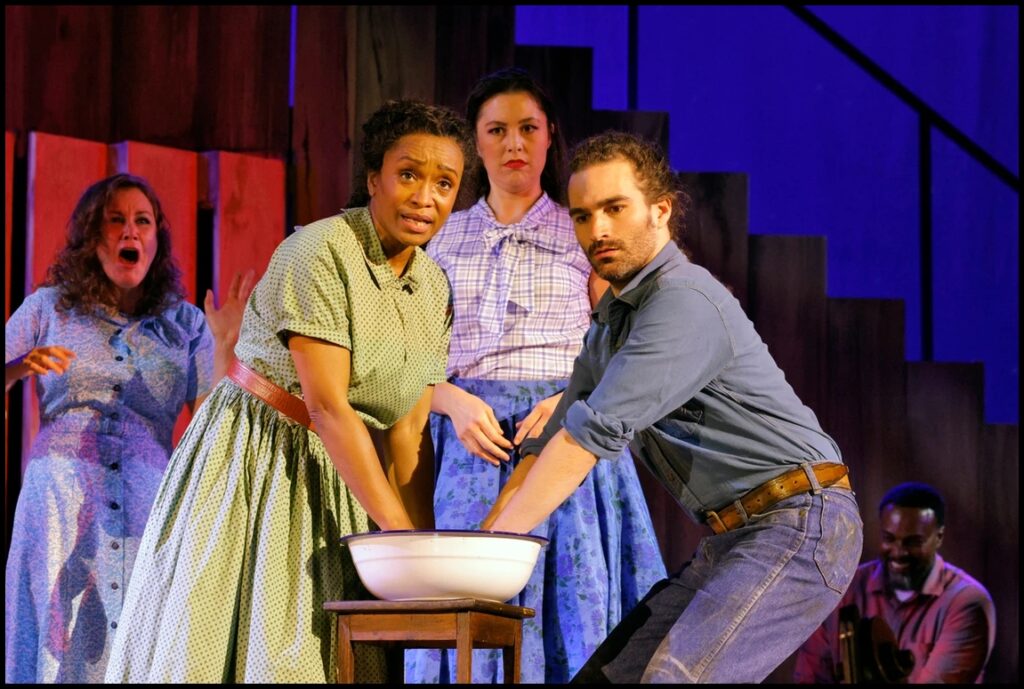
Bass Matt Boehler plays Schoolch, the local schoolteacher who found the baby Bulrusher in a basket stuck in a marsh along the Navarro River and raised her. Taciturn to a fault, he has taught her proper English (the locals have developed a special language known as “Boontling”) but little about life, which she seems yet to handle fairly well on her own. He and Logger (bass Kenneth Kellogg) are both permanently hung up on Madame (mezzo Briana Hunter), who has been running the town brothel for years and refuses to marry them.
” … the vocal performances are all outstanding. …”
Into this brew are injected two more characters. Logger’s niece Vera (mezzo Briana Hunter), walking the 30-mile road from the nearest train station in the rain, is picked up by Bulrusher in her truck. Vera has left Alabama and becomes the only other black person, aside from Logger, that Bulrusher has known. “Boy” (tenor Chad Somers) is a white teenager with a persistent, unreciprocated crush on Bulrusher. Carefully modulated in the libretto and music, these two interlopers transform everyone and themselves. Such care takes time, but it provides dividends in Act 2, where existing and developing conflicts flare and are finally ameliorated.
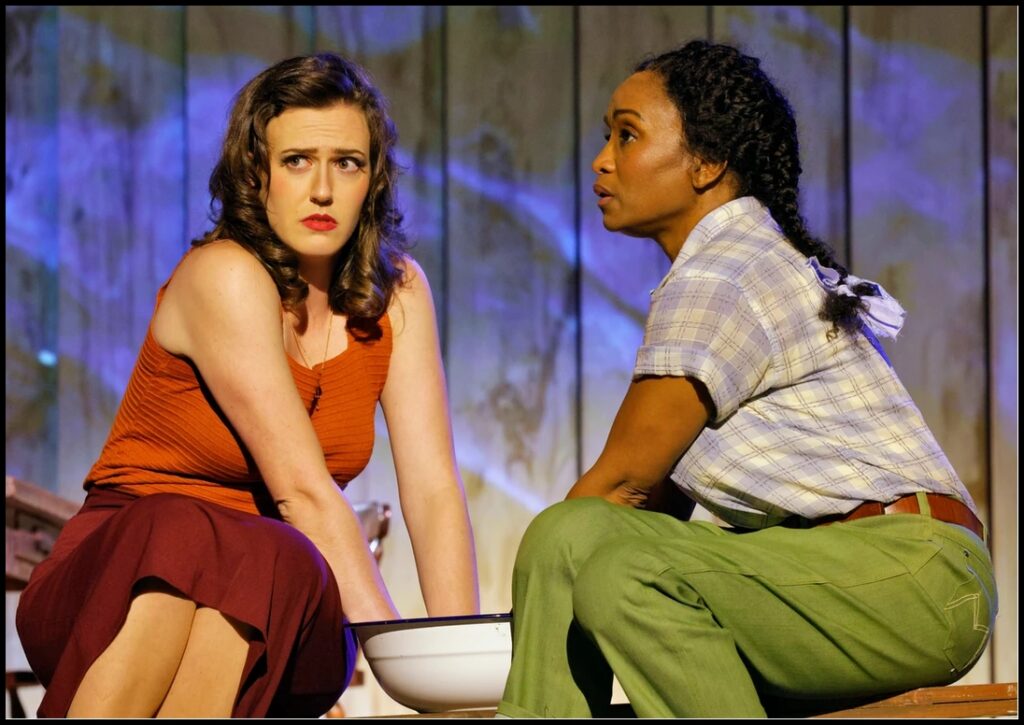
Stookey’s music is appropriate to the tonal and pastoral setting,. The orchestration is for the most part delicate, subdued, and never monotonous, with sparky piano accents and ominous bass-drum rolls. It is most effective in accompanying Bulrusher’s mystic side, her spirituality with the Navarro River, and her emerging love for Vera. Rarely is the orchestra in the forefront, but it did elicit audience laughter when a snare drum was used to imitate the sound of an 1950s dial phone that Madame was using.
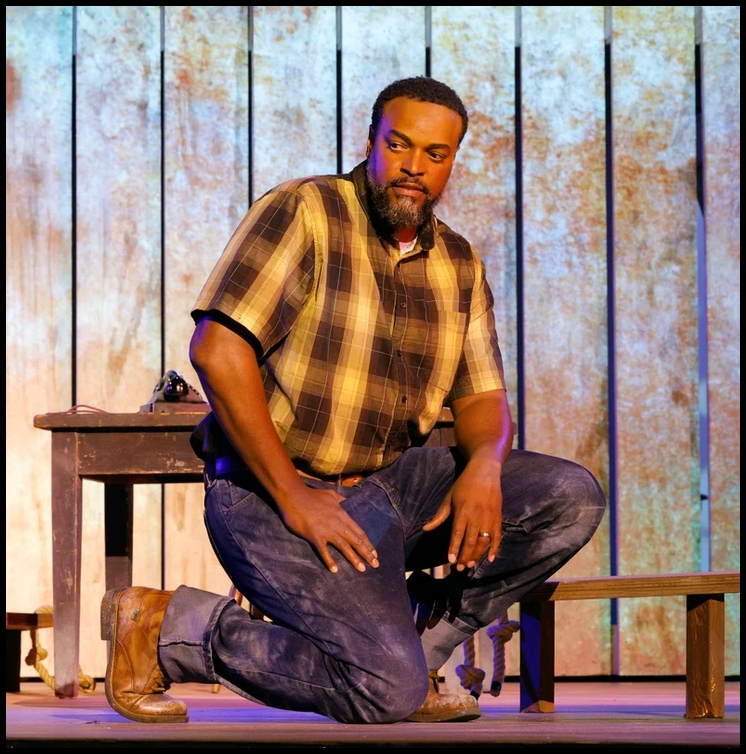
The libretto itself has some lovely poetic moments, such as when Bulrusher inexplicably recollects her experiences as an infant floating in her Moses basket. At other times, the poetry’s meaning may not be immediately decipherable to the average listener. Perhaps these poetic sections should be printed in future programs?
The vocal performances are all outstanding. There is also a chorus of five mysterious individuals who echo or accompany Bulrusher’s spiritual moments and soliloquys. Their voices were a great plus to the proceedings aurally, however obscure their function. Sulker’s portrayal of Bulrusher deserves special mention. Her voice is crystal clear, ethereal, innocent, yet somehow knowing—perfect for the role. Unfortunately, unlike those of her fellows, it did not project well toward the more distant seats, making the Scottish Rite Temple sound all the more cavernous.
I regret to conclude that for me, many excellence featuress of this production were undercut by the scenic and projection design of Yuki Izumihara. Bulrusher is a uniquely California story about a unique California community. Where were the golden hills and redwoods? Izumihara instead flooded the stage with watery projections that may have been evocative for Navarro scenes, but they almost never left the stage.
Furthermore there were a few other details this reviewer thought distracted from the piece. First there was an unattractive upside-down handsaw of a staircase that made sense for the brothel, however unrealistic, but nowhere else–especially the Rock scene at the beach. And why was the chorus carrying around glowing balls of different colors and sizes? Were these Bullrusher’s mood oranges? Finally, there were numerous benches that were noisily moved around at almost every scene transition. If there is a reason for this distracting exercise, Stookey should consider writing music to underscore it, for it breaks the flow, throwing a boulder into the Navarro, so to speak.
-30-
 ASR’s Classical Music Section Editor Jeff Dunn is a retired educator and project manager who’s been writing music and theater reviews for Bay Area and national journals since 1995. He is a member of the San Francisco Bay Area Theatre Critics Circle and the National Association of Composers, USA. His musical Castle Happy (co-author John Freed), about Marion Davies and W.R. Hearst, received a festival production at the Altarena Theater in 2017. His opera, Finding Medusa, with librettist Madeline Puccioni, was completed in January 2023. Jeff has won prizes for his photography, and is also a judge for the Northern California Council of Camera Clubs.
ASR’s Classical Music Section Editor Jeff Dunn is a retired educator and project manager who’s been writing music and theater reviews for Bay Area and national journals since 1995. He is a member of the San Francisco Bay Area Theatre Critics Circle and the National Association of Composers, USA. His musical Castle Happy (co-author John Freed), about Marion Davies and W.R. Hearst, received a festival production at the Altarena Theater in 2017. His opera, Finding Medusa, with librettist Madeline Puccioni, was completed in January 2023. Jeff has won prizes for his photography, and is also a judge for the Northern California Council of Camera Clubs.
| Production | Bulrusher | |
|---|---|---|
| Based on the play by | Eisa Davis | |
| Directed by | NJ Agwuna | |
| Producing Company | West Edge Opera | |
| Production Dates | Thru August 15th | |
| Production Address | Scottish Rite Temple 1547 Lakeside Dr, Oakland, CA 94612 | |
| Website | www.westedgeopera.org | |
| Telephone | (510) 841-1903 | |
| Tickets | $22-$162 | |
| Reviewer Score | Max in each category is 5/5 | |
| Overall | 3.5/5 | |
| Performance | 4/5 | |
| Music | 3.5/5 | |
| Libretto | 3.5/5 | |
| Stagecraft | 2/5 | |
| Aisle Seat Review Pick? | No |
